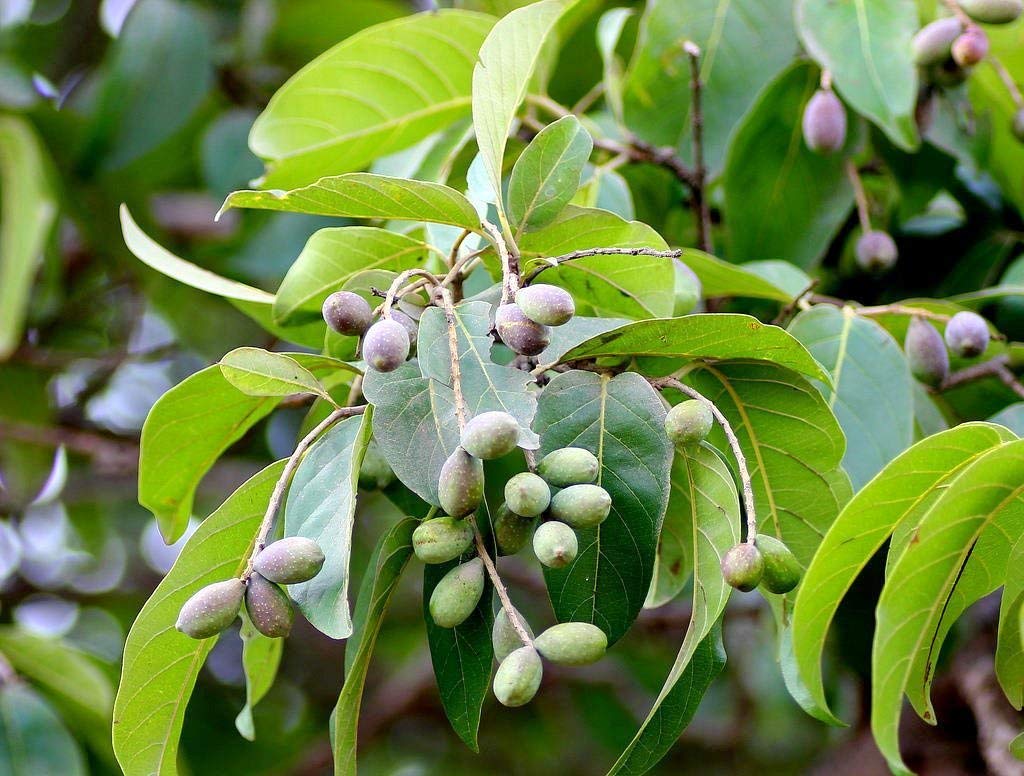Ink-nut tree

In Religion and Mythology
The Sanskrit name ‘Haritaki’
The Sanskrit name ‘Haritaki’ indicates the fact that the plant grows well in the abode of Hara (another name for Lord Shiva) i.e. the Himalayas. The tree is also believed to promote fearlessness due to its association with Lord Shiva, who is worshipped to overcome fear in face of death or disease. Its other common Sanskrit name, ‘Abhaya’, means fearlessness.
The tree has excellent medicinal qualities. It is best known for being one of the constituents of the popular Ayurvedic formula ‘Triphala’ (which contains equal proportions of Haritaki, Vibhitaka (Terminalia bellerica) and Amalaki (Emblica officinalis) and various other Ayurveda and Siddha formulations. This herb is an effective remedy for chronic ulcer, diarrhea, dysentery and piles. It is also an effective purgative and helps in removing toxins and fats from the body. The wood is used in making furniture, carts, and agricultural implements and in buildings. It also purifies the environment.



Botanical Name: Terminalia chebula Retz.
Common Name: Ink-nut tree, Harra (Hindi), Kaddukai (Tamil), Haritaki (Sanskrit)
Distribution: Bihar, West Bengal, Assam, Central India and South India